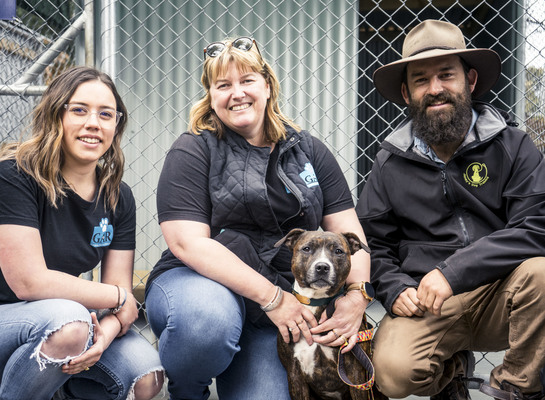
Dogs and cats have been “minutes” from death before Geelong Animal Rescue (GAR) saved them from being “put to sleep“, according to Jane Cooper.
For five years the St Albans Park mother-of-three has organised supplies for GAR’s canine and feline foster parents, who save an animal every second day.
“We’d rather them be in a tiny back garden and walked every day than dead,“ she said.
Originally Jane drew pet portraits and donated the proceeds to GAR, but she soon found herself fostering a pup.
“He was a bouncy, happy puppy,“ she said.
The greyhound puppy, Larry, and one of his brothers had hernias.
“Unfortunately one passed away before he came to (GAR) – his hernia burst,” Jane said.
But Larry survived surgery and now lived happily in Geelong with his permanent owner, Jane said.
“He’s a very big boy now.“
Jane quickly became “addicted“ to fostering cats and dogs.
“I reckon I’ve fostered 30-something animals.”
She and about 90 volunteers foster tabbies and pooches until GAR can find them a permanent home.
Often the volunteers took breaks, especially when they had a “foster fail” and struggled to say goodbye to a furry friend that had become a family member, she explained.
“I’ve got two of those,” she said.
“Some can be challenging … and you’re happy to see the back of them, but others are really loving and just worm their way into your heart.”
Jane adopted Nessie, who “was supposed to be a border collie cross kelpie“ but “looks like a corgi“.
“She’s sweet-natured, gentle and gets along with everyone,“ she said.
“Everyone’s always fascinated with what the hell she is. We wish we knew.”
She also adopted Corky, who had wobbly cat syndrome, from a litter of kittens an owner surrendered to GAR.
“She can’t jump fences – she’s a bit special and deaf as post,” she said.
“She goes up to dogs because she’s not scared of anything. We like the ones that have that little something a bit different.”
Jane’s two adult children also adopted pets they fostered through GAR.
Foster carers looked after their fur child until GAR found a suitable owner and backup, which could take weeks to years, Jane said.
GAR vetted foster carers, who in turn vetted potential owners, she said.
James Graham, of Jimmy’s Dog Training, helped train and assess dogs for their new owners, she added.
Jane organises beds, kennels, food and other canine and feline necessities for GAR, which has rescued more than 1240 animals.
The group even has “palliative carers“ that look after sick or dying animals before vets euthanise them at home.
“They’re an amazing breed,” Jane said.
“(The animals) feel loved to the very end.”
Adoption fees covered half of GAR’s costs while the group relied on fundraisers and donations for the rest, Jane said.
The group had to “think outside of the box“ to secure an occasional government grant, she said.
Recently GAR received a $4700 State Government grant for marquees and promotional material to get much-needed publicity, Jane said.
“There’s a lot of rescue groups out there that do a great job but get overlooked.“






